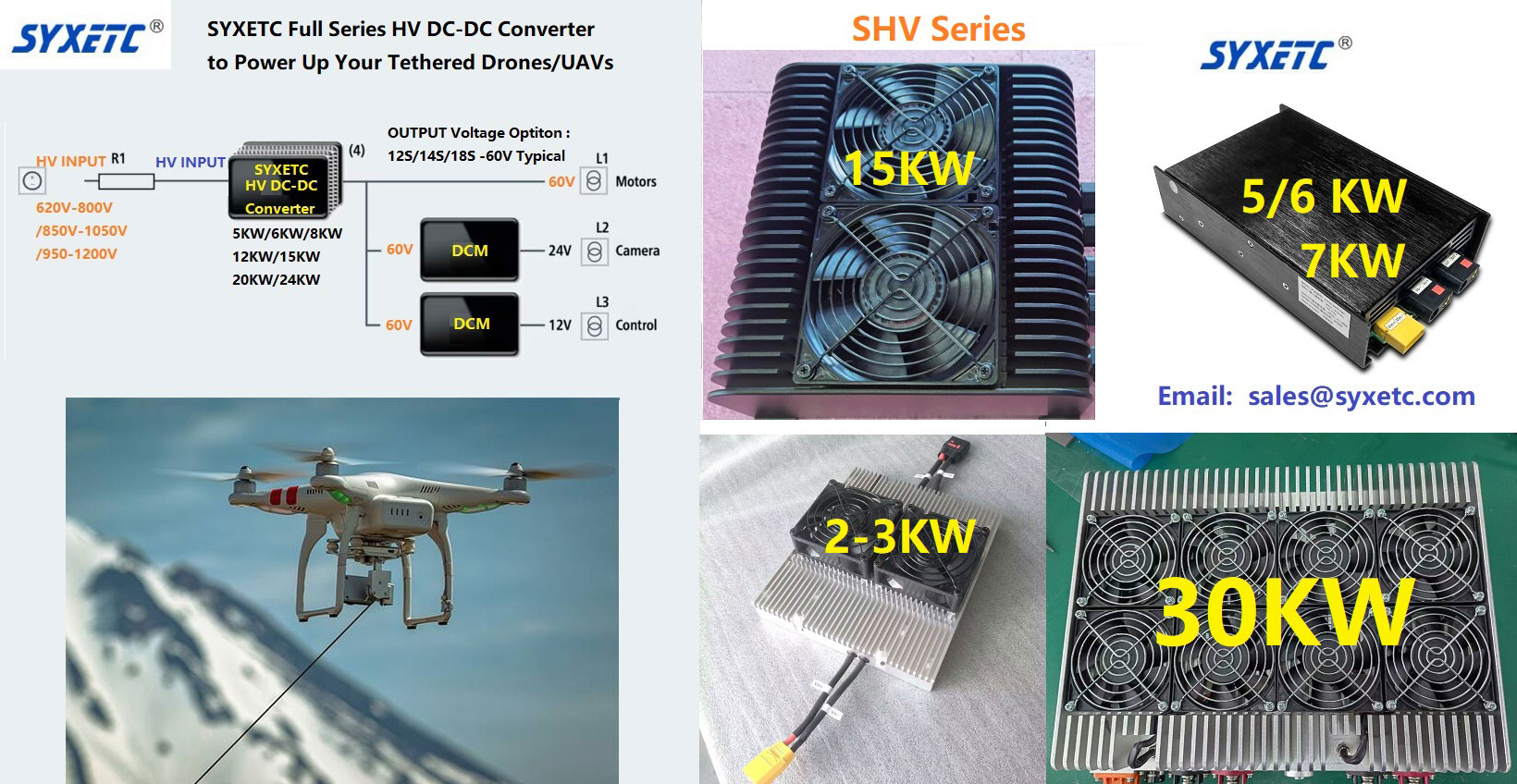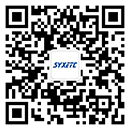SYXETC Full Series Super HV DC-DC Converter to Power Up Your Tethered Drones/UAVs
INPUT:620V-800V/850V-1050V/950-1200V
OUTPUT Voltage Typical:60Vdc
OUTPUT Voltage Optiton : 12S/14S/18S
12S:48-50Vdc Standard 50Vdc
14S:59-60Vdc Standard 60Vdc
18S: 75Vdc
Rated Power:
5KW/6KW/8KW/12KW/15KW/20KW/24KW/2X15KW

The market for tethered UAVs and drones is growing at a significant rate. Predicted to grow 61% year-over-year in 2020, the growth is due to the increasing amount of applications and use cases that can benefit from a persistent aerial platform.
Unlike their run-time limited untethered counterparts, tethered UAVs do not need to carry their primary power source, increasing their payload capacity.
They can maintain high levels of endurance up to 24 hours, at heights up to 200m, and in most weather conditions. Applications include traditional security, intelligence gathering, and surveillance use cases among many. Their prolonged flight capability makes them suitable for provisioning emergency telecommunications networks during a humanitarian crisis, monitoring firefighting across a large industrial complex, and filming sizeable outdoor sporting events. As tethered UAVs find new applications, so the technical challenges grow.
The desire to integrate more capabilities within a UAV increases the payload weight, and the benefits gained by extending the operational height imposes more tether drag. Also, raising the flight time dictates enhanced safety monitoring, provision of a backup power source, and safety features such as a parachute.
Technical challenges powering a tethered UAV
Powering a tethered UAV presents some technical challenges. The UAVs power requirements are driven by the rotor drive motors, control electronics, and the payload application, of which the motors represent the largest proportion of the available power budget. Passing enough power through a long tether introduces transmission losses due to the resistance of the cable.
Achieving the maximum payload requires that the drag weight of the tether be kept to a minimum, placing constraints on the conductor thickness. Thinner conductors increase the cable resistance, which as operating height increases become more significant.
To achieve the power delivery requirements of the UAV, the only viable option that keeps distribution losses low is to transmit a high voltage along the tether and perform power conversion to the desired levels within the UAV. With weight as a critical constraint, the power conversion components also need to be lightweight.
The use of a high DC voltage lowers the current flowing in the tether (I = P/V), allowing small tether conductor diameters, and reducing the I2R losses. The trend in the industry is moving towards transmitting up to 400VDC in the tether and using one or more DC-DC converters in the UAV to power the rotor motors and application circuitry.
Selecting a DC-DC converter with a high voltage input
There are many DC-DC converters available from a range of suppliers but finding one that can accommodate a voltage input as high as 400VDC or 700VDC or even 1000VDC narrows the available options considerably. The converter also needs to have a wide conversion ratio, down-converting to, say, a 48VDC or 60VDC output.
 Chinese
Chinese ENGLISH
ENGLISH


